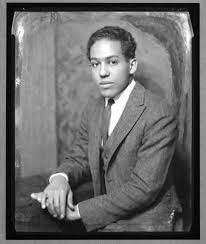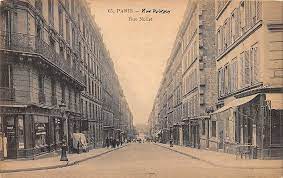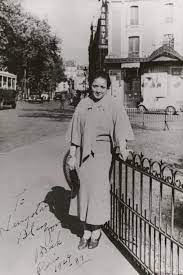African-American poet and recently crewman on the S. S. Malone, Langston Hughes, 23, arrived in Paris back in February with just $7 in his pocket, but hopeful to find adventure in the city he has heard so much about.

Langston Hughes
Hughes spent the first month sharing a crappy hotel room in Montmartre with a Russian dancer, with nothing left over to buy food. He became so desperate he even contacted his mother back in the States for money. She told him that his stepfather is really sick and she has no money for food either.
When he finally got a job as a bouncer at a club over on rue Fontaine, paying 5Fr—about 25 cents—per night, he thought his fortunes had changed.
Then he had to break up a fight between two women attacking each other with broken bottles and decided that this is not the career path he had in mind.
Now Langston has rented this little attic room and landed a respectable and safe job at the newly reopened jazz and soul food club Le Grand Duc, just a 15-minute walk away on rue Pigalle—He’s a dishwasher!

Rue Nollet
Langston has made friends with one of the entertainers at the club, Ada Smith, 29, a cigar-smoking African-American redhead whom everyone calls Bricktop. Hughes feels as though he’s finally settling into Paris life.

Ada “Bricktop” Smith
“Such Friends”: 100 Years Ago… is the basis for the paperback series, “Such Friends”: The Literary 1920s. Volumes I through IV, covering 1920 through 1923 are available at Thoor Ballylee in Co. Galway, and as signed copies at Pan Yan Bookstore in Tiffin, OH, City Books on the North Side and Riverstone Books in Squirrel Hill, Pittsburgh, PA. They are also on Amazon.com and Amazon.co.uk in print and e-book formats. For more information, email me at kaydee@gypsyteacher.com.
Mark your calendar! The Greater Pittsburgh Festival of Books returns to the Pittsburgh Theological Seminary in Highland Park on Saturday, May 11. Stop by the “Such Friends” booth in Writers’ Row.
This summer I will be talking about the literary 1920s in Paris and New York at the Osher Lifelong Learning Institute at Carnegie-Mellon University.
Manager as Muse, about Scribner’s editor Maxwell Perkins’ relationships with F. Scott Fitzgerald, Ernest Hemingway and Thomas Wolfe, is also available on Amazon.com and Amazon.co.uk in both print and e-book versions.
If you want to walk with me through Bloomsbury, you can download my audio walking tour, “Such Friends”: Virginia Woolf and the Bloomsbury Group.



